
I believe that ice cream is the solution for many of life’s problems. Even on our worst days, a scoop of creamy-delicious goodness can bring smiles to our faces, and on our best days, celebrating with ice cream only heightens the positive experience.
But there are so many brands out there? Which one deserves my love, my loyalty, and my willingness to spend money for an indulgent treat?
If you’re me, that brand is Jeni’s Splendid Ice Cream (especially their Whiskey & Pecans flavor). Jeni’s Splendid Ice Cream combines the best locally sourced ingredients, dairy, and produce with fair-trade enhancements, resulting in interesting, original flavors that tickle the palate and tease the imagination.
In Summer of 2013, All Things Girl was lucky to interview the founder of Jeni’s Splendid Ice Cream: Jeni Britton Bauer. Not only is Jeni the founder of my favorite ice cream, she is also the author of The New York Times best-selling Jeni’s Splendid Ice Creams at Home, which earned Jeni a 2012 James Beard Award (the Oscars of the Cooking World).
This is a re-run of that 2013 interview (which is no longer available online). I can’t think of a better first interview to feature here at Modern Creative Life as we kick off our “Conversations Over Coffee” series.
When it comes to living a creative life, I think you’ll find that Jeni epitomizes everything about it. I hope you are as inspired as I am as you get to know the Woman behind the Scoop.
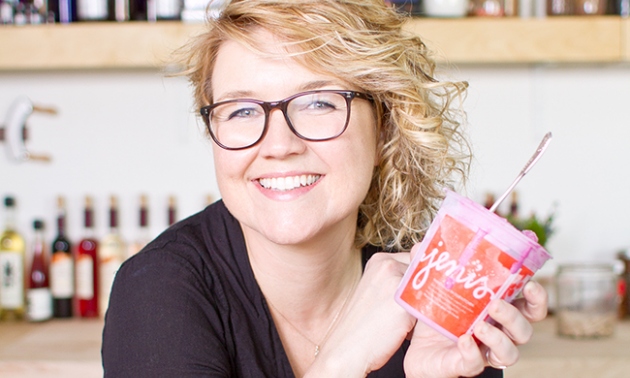
Some folks (fortunately not me!) may never have heard of Jeni’s Splendid Ice Creams. First of all, tell the readers about Jeni, the woman behind Jeni’s Splendid Ice Creams.
I’ve been working with ice cream ever since a day at home in the mid ’90s and ice cream occupies my whole life. I pretty much devote every waking minute to thinking about ice cream and how to make the best-possible ice creams in the world. I like to think I haven’t met a wall I can’t get over or through.
Can you tell us the story of Jeni’s Splendid Ice Creams?
One day in the early ’90s in a figure drawing class at Ohio State University, a model walked in who I didn’t like to draw. I’d been messing around with ice cream and that day I decided I just wanted to go home and make ice cream. So, I stood up and walked out, leaving everything—my portfolio, my art supplies. And I quit everything else in my 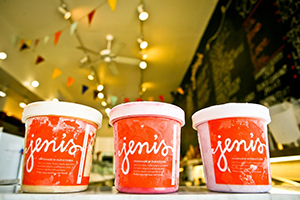 life—school, other jobs—and started my first ice cream business within six months.
life—school, other jobs—and started my first ice cream business within six months.
That business didn’t work.
So, then I took time off, learned about customer service (namely that it’s a great idea to be consistent in the flavors you offer repeat customers), traveled, lived, and learned more about ice cream. In 2002 in the historic North Market in Columbus I opened Jeni’s Splendid Ice Creams. It was there in that amazing place where I learned from farmers, producers, and mongers everything I know about ingredients. It is also where I learned about how a successful business is run, customer service, product display, and signage. Now, we have 12 shops, our pints are in more than 750 grocery stores coast to coast, and we ship ice cream to any address in America. It’s been a blast and it continues to be.
I think I remember hearing that you began creating ice cream in your home kitchen. Where did that spark of passion for ice cream begin?
It began one day when I mixed cayenne essential oil into regular store bought chocolate ice cream and let it melt slowly on my tongue. It was cold, tasted like chocolate, and about 5 seconds later it burst into flames in the back of my throat. No joke, it was like the sky tore in two, light enveloped me for a moment and I knew right then that ice cream would occupy my whole life. I didn’t know how I would do it, how long it would take, how many people, how much money (of which I had NONE), but I knew it was my path. At that moment, I realized that I had found what I was looking for—a place where art, perfume and culinary collide, and I set sail. I began to make ice cream constantly at home.
What advice would you give to other small business owners to create and maintain a top-notch company and retain quality employees?
We didn’t set out to make the best ice cream in Columbus, or the best ice cream in America, or the world even. We set out to make the best ice cream we could imagine.
This means that we make better ice cream today than we did yesterday, and we will make better ice cream tomorrow than we do today. My advice is: don’t build a better mousetrap, build the best you can imagine. That will keep you on your feet, moving forward. That will keep your team inspired. That will keep you proud of the team, because what you can imagine is always better than what already exists.
What is your first memory of creating something in the kitchen?
My first memory is eating raw scallions, parsley, and cucumber peels from my Grandmother Bette’s garden. We were making salad.
When did the passion grow to a point that you knew you wanted to be a chef?
I don’t think of myself as a chef. For me, ice cream is where art, pastry and perfume collide. That is the craft of our ice cream. You can tell stories and transport people through flavor, texture and scent.
In what ways did your childhood and family influence your choice to follow a career in food?
My grandmother is an artist and she and my grandfather owned a large forest where we would frolic every weekend. We had honey bees, tapped our maple trees for sap which became syrup, and tended gardens in every spot where the sun shone through the trees. We also foraged for wild berries, mushrooms and other edibles.
As an artist, my grandmother taught us to be aware of our senses in the woods. The smell of the forest floor in every season is a vivid memory to me, the air there, the bubbling stream where we would swim in the summer and the sounds in the vast and mysterious space beneath the canopy of trees in each season were unique. If I close my eyes I am transported back there as if I never left.
It isn’t about food for me. It’s about scent. It’s always been about scent. Layering and balancing ingredients to unfold slowly top, middle and base notes. As in music, or perfume.
There is no other food like ice cream. The fat in cream holds and carries scent to your nose. If you add vanilla 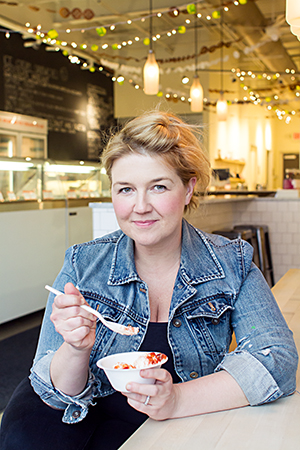 to a cookie, for instance, and then bake it, most of the vanilla will evaporate in the hot oven. In ice cream, you steep ingredients and fuze oil-soluble scents to the butterfat. It gets locked in when the mixture is frozen. The fat in cream is special because it melts perfectly at body temperature. Other fats don’t do this, so when you lick an ice cream the warmth of your tongue releases the scent from the fat in perfect timing. This is important because if it has to stay on your tongue too long to warm up, then you swallow it before you ever taste it. A good way to illustrate this is to freeze a high quality dark chocolate bar. You have to chew it and hold it on your tongue for a long while before you can taste it. It has to come to body temperature before it releases its scent. This is because cocoa butter melts at a higher temperature so it takes much longer to melt on your tongue.
to a cookie, for instance, and then bake it, most of the vanilla will evaporate in the hot oven. In ice cream, you steep ingredients and fuze oil-soluble scents to the butterfat. It gets locked in when the mixture is frozen. The fat in cream is special because it melts perfectly at body temperature. Other fats don’t do this, so when you lick an ice cream the warmth of your tongue releases the scent from the fat in perfect timing. This is important because if it has to stay on your tongue too long to warm up, then you swallow it before you ever taste it. A good way to illustrate this is to freeze a high quality dark chocolate bar. You have to chew it and hold it on your tongue for a long while before you can taste it. It has to come to body temperature before it releases its scent. This is because cocoa butter melts at a higher temperature so it takes much longer to melt on your tongue.
All of this is to tell you that learning to be aware of my senses and to remember them and to connect emotionally with what I hear, see, smell or taste or the way the wind feels on my skin is what I learned as a child and it’s why I make ice cream today.
When I say that fresh watermelon sorbet tastes like a broken concrete sidewalk and sunburned cheeks, this is an emotional connection that I have. It’s bigger than the watermelon, the experience of eating it becomes transcendent. It’s because I was raised to be aware of life going on around me. It started at the woods, but it went everywhere with me.
Part of our goal here is to slow you down enough to enjoy that ice cream deeply to bring you into the present and maybe connect you with someone, a farmer who grew an ingredient or the friend you are with. To give you something to think about and talk about while you are eating the ice cream.
It’s more than a passion for food that my grandmother gave me. It’s a love of emotion and of people. I explore that through ice cream.
And beyond food, how did your upbringing influence you as a person?
I had a very casual upbringing. Full of exploring and alone time. I moved almost every year growing up – to another neighborhood, another school. I’ve always embraced change maybe because I got used to it. Though I was painfully shy, it never bothered me to start again. To make new friends. To start new clubs in the neighborhood. To roam around barefoot, climb on the tops of roofs, and cause a bit of trouble. I never felt that the rules were there to hold me back, but to support me. So, I felt that they were optional.
I believed, and still do, that if you are mostly a good person you can break the rules here and there (read: whenever you want to). I was encouraged to do this by my mother. She never did anything she didn’t want to and encouraged me not to do homework. She believed that when we were home, it was family time and time to learn from what we did at home. And we did.
I barely remember school. My after school life and weekend life was rich. I daydreamed and doodled the whole day in school and couldn’t wait to get home to do whatever I was working on there. There were always projects, like creating a new business, writing and producing a play, trying to raise money for a charity, or running one of my many clubs. This was how my sister and I played. It was very productive, high output.
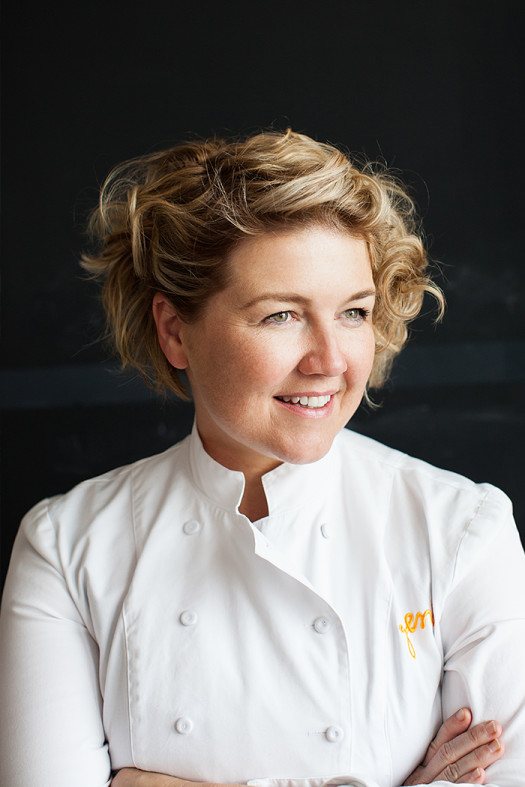 There were hard times, too. And those made my sister and me fight even harder to get over the fence. To build security in our lives. To find safety. We both did. And I don’t wish anybody hardships, but you have to find a reason to become a fighter. You’ve got to own it. And to learn to hustle. I mean work every single resource you have to move forward, even when it seems like you have nothing.
There were hard times, too. And those made my sister and me fight even harder to get over the fence. To build security in our lives. To find safety. We both did. And I don’t wish anybody hardships, but you have to find a reason to become a fighter. You’ve got to own it. And to learn to hustle. I mean work every single resource you have to move forward, even when it seems like you have nothing.
Speaking of . . . We’ve all heard of the person who “started with nothing” and built a great big business. I’ve always thought that was stupid.
Nobody starts from nothing. We all have something. Even if it’s only our hands, feet, eyes and brain. The person who wins is not the one who started with all the right tools, but the one who learned to live without them and made up for them in persistence and the endurance of a slow and steady pace. You start where you are, put one foot out, and take the step. You surround yourself with people who are smarter than you. If you feel comfortable, you’re not going anywhere. You’ve got to take risks, fail, get up. I mean you have to forgive yourself immediately for looking like an idiot, which is hard sometimes. Most of all, you’ve got to stick it out when it gets difficult, when it gets boring, when you loose, when you burnout.
The concept of “slow foods” and buying local and eating local is very popular right now. And I know you source quite a bit locally. Can you share why you are so passionate about sourcing your dairy and produce local?
The first answer is for flavor. But, it all stems from my experience at the North Market where I started my first ice cream business in 1996 (I started Jeni’s Splendid Ice Creams in 2002). I would often trade ice cream for ingredients to make other ice creams. And the merchants began to seek out new and exciting things for me to use in ice cream.
My relationship with them was what made the ice creams taste so good.
It’s about people. When you know your suppliers, you often get better flavor. We think of our company as a community where we all support each other. From our growers and suppliers to our team and customers.
For dairy it’s important because there is absolutely no question that grass-pastured milk tastes better – particularly the butterfat. If we exist to make the best ice creams we can imagine, then we’ve got to start with the best dairy we can find – and not ruin it when we get it — ie: minimally pasteurized, and only once.
What can the average person do to eat more from local sources (and why?)
In Ohio, we are blessed with incredible soil and different growing regions. We grow lots of food, in lots of varieties and have an abundance of innovative growers/farmers. Local is something that we do here because we’ve always had farm markets and farm stands all over, and just outside, the city. It’s part of our culture, not simply a trendy thing to do. We are lucky for that.
Eating healthfully means nourishing your mind, body and spirit. We can incorporate more variety when we eat from 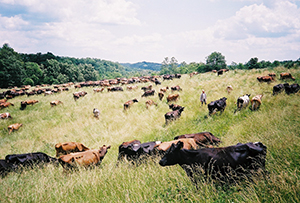 local and regional sources, but without question, the most important thing we can do is to eat more fresh vegetables—wherever they come from, local or not.
local and regional sources, but without question, the most important thing we can do is to eat more fresh vegetables—wherever they come from, local or not.
Tell us about “Local Matters” the non-profit you helped found.
Local Matters exists to make our food system more secure, just, prosperous and delicious. We do these amazing classes for Kindergartners that have a profound effect on how they eat. My daughter’s school does the program and she is so much more aware of what she eats now. I have seen first-hand how it can affect a child. We also work to get fresh foods into neighborhoods that don’t have them, and to create demand for our local growers.
Let’s talk more about ICE CREAM! You have some unique flavors. Where do you get your inspiration?
I always start with what’s in front of me. In a way, ice cream is how I encounter the world.
Sometimes I will taste something new and get an inspiration, or a grower or producer will bring me something lovely and I will make ice cream with it. I always start with classic combinations and then branch out from there. There is always a thread that begins to form and that leads to the flavor.
So, if I taste some really sweet beets, I’m thinking: beets are like carrots, carrot cake…spice, cream cheese icing. Beets are hot pink, what’s hot pink, what’s red? Red velvet cake roasted beets and chocolate. Beets….I had them in Brooklyn with lemon, mascarpone and poppy seeds – a classic Northern Italian combination — these ingredients work in ice cream.
Or . . . I may see a 1973 lemon yellow trans am and think what flavor is that car? Maybe it’s a crunchy, hard, lemon scented candy, crushed and and layered into lemon cream? Should there be licorice there? What about salty lemon crackle? Reminds me of preserved lemons or a really tasty margarita. Could work for ice cream, let’s try it. (and now I really must)
The world is full of flavor.
Fun seems to be an important element for all really successful chefs. Do you think fun is important?
I think being an optimist is a nice way to go. Being impatient. Curious. I don’t know about fun, like I don’t know 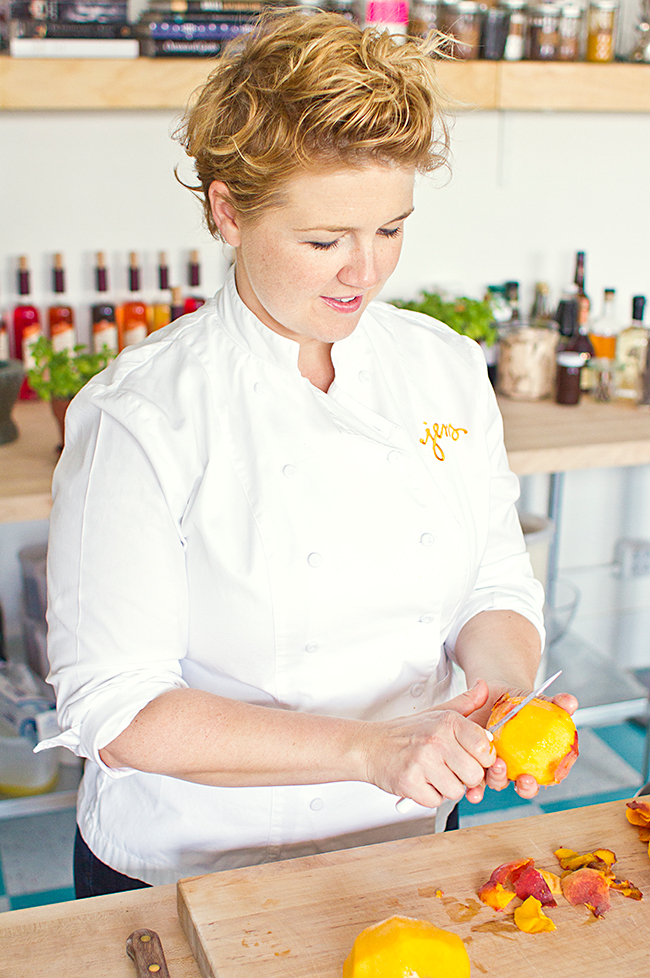 about passion (which I also get accused of). Sure, things like fun and passion are a part of it, but you have to work really hard to get there. You have fun when you build a team that is challenged, secure and excited about the future.
about passion (which I also get accused of). Sure, things like fun and passion are a part of it, but you have to work really hard to get there. You have fun when you build a team that is challenged, secure and excited about the future.
Most importantly, you have to be a good team leader, it doesn’t have to be fun, but it does have to be inspiring on some level in order to build a team that can perform together.
I think you make the most of all the things you are committed to. I would have fun wherever I go. Whatever I was doing. . . Because I commit myself fully to whatever I do.
Do you think that a chef’s joy in what they’re making transfers to the end product, when a stranger is tasting it?
I think the chef’s commitment and pride transfers to the end product. Making something beautiful, seeing a person enjoy it. And that brings her joy.
I’m sure ice cream isn’t served 3 meals a day in your house. What are your go-to meals for your family?
We always eat together for breakfast and dinner. For time, and health reasons, we eat simply and meatless most of the time: a sliced tomato or avocado on hearty bread, sauteed mushrooms and kale stuffed into a baked potato for lunches or dinners.
On Sundays I might make roasted chicken with super-crisp and salty skin and a green salad, then make stock with the chicken bones. Or, I might make street tacos with pork or fish and accoutrements, hopefully with plenty of leftovers for lunches. We do not have ice cream very often at home—maybe twice a month.
Speaking of family, how to you manage to balance it all – parent , run a successful business, be a good partner in your marriage?
I don’t. I have a lot of help and the best partner/husband anyone could ask for. I do not believe you can “have it all” through management and control. You just have to steal it. Enjoy the chaos. Roll with it.
When I travel, I try to fly there and back in one day so I can put the kids to bed and wake up with them the next day.
If my afternoon opens up during the week and I find myself with some time, I will go pick up my daughter and son and go to the park – I know that everybody else is at the office or kitchens working, but I also know that I will more than make up for this stolen time later in the evening or on the weekend – I almost always work some part of the weekend.
My husband, Charly and I will stay up late talking at least once a week — it’s usually a weekday and then we are tired the next day, but it’s worth it. Being tired sucks, but being a robot sucks more. I need the time to connect with him.
So I steal it. Best I can describe it. I don’t want to sacrifice anything. I don’t want to miss anything.
What next?
To fit in as much as we can in the short time we have to do it. To grow, learn, create, build, and make even better ice creams than we did yesterday.
Visit Jeni’s Website (Buy Her Books & Ice Cream!)
Jeni on: Twitter | Facebook | Instagram
About the Author: Debra Smouse
 Debra Smouse is a self-admitted Tarnished Southern Belle, author and life coach. She resides in Dayton, Ohio where she practices the art of living with the Man of Her Dreams. When she’s not eating ice cream, you’ll find her reading and plotting when she can play her next round of golf. She’s the Editor in Chief here at Modern Creative Life.
Debra Smouse is a self-admitted Tarnished Southern Belle, author and life coach. She resides in Dayton, Ohio where she practices the art of living with the Man of Her Dreams. When she’s not eating ice cream, you’ll find her reading and plotting when she can play her next round of golf. She’s the Editor in Chief here at Modern Creative Life.
 that I’m feeling incredibly frustrated. I’m not writing as many blog posts or making much progress on my next book. I’m not doing morning pages or writing in my journal consistently.
that I’m feeling incredibly frustrated. I’m not writing as many blog posts or making much progress on my next book. I’m not doing morning pages or writing in my journal consistently.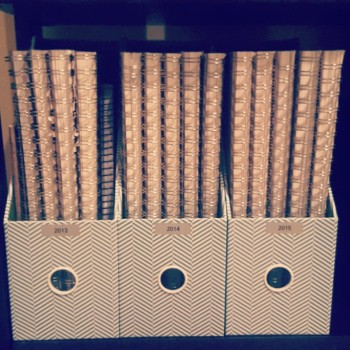 Now I had all those needs, requests for unusual items, and practical lists of tasks with due dates in one place.
Now I had all those needs, requests for unusual items, and practical lists of tasks with due dates in one place.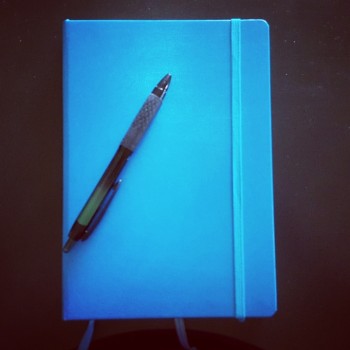 book and notated the page number in that handy dandy index at the front so I can find it later.
book and notated the page number in that handy dandy index at the front so I can find it later. Debra Smouse is a self-admitted Tarnished Southern Belle, life coach, and author of Create a Life You Love: Straightforward Wisdom for Creating the Life of Your Dreams. She resides in Dayton, Ohio where she practices the art of living with the Man of Her Dreams. She’s the Editor in Chief here at Modern Creative Life. Connect with her on Twitter, Facebook, and Instagram.
Debra Smouse is a self-admitted Tarnished Southern Belle, life coach, and author of Create a Life You Love: Straightforward Wisdom for Creating the Life of Your Dreams. She resides in Dayton, Ohio where she practices the art of living with the Man of Her Dreams. She’s the Editor in Chief here at Modern Creative Life. Connect with her on Twitter, Facebook, and Instagram.
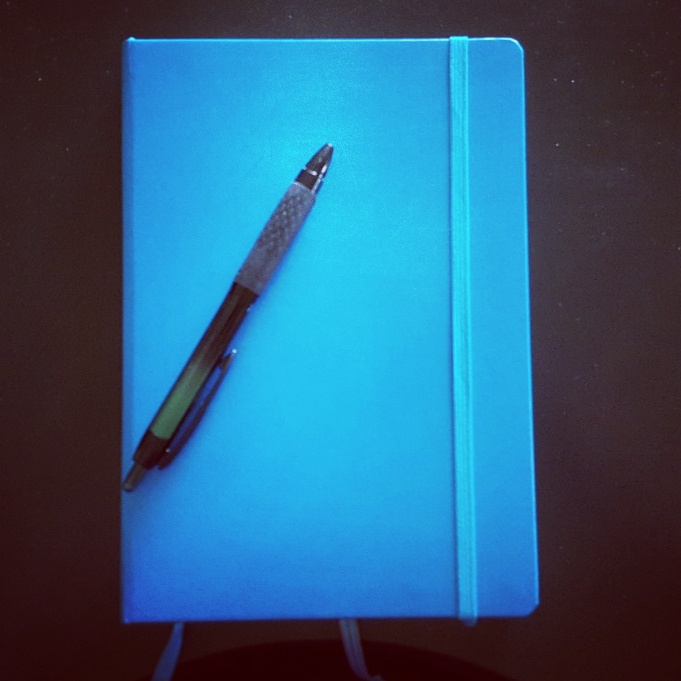
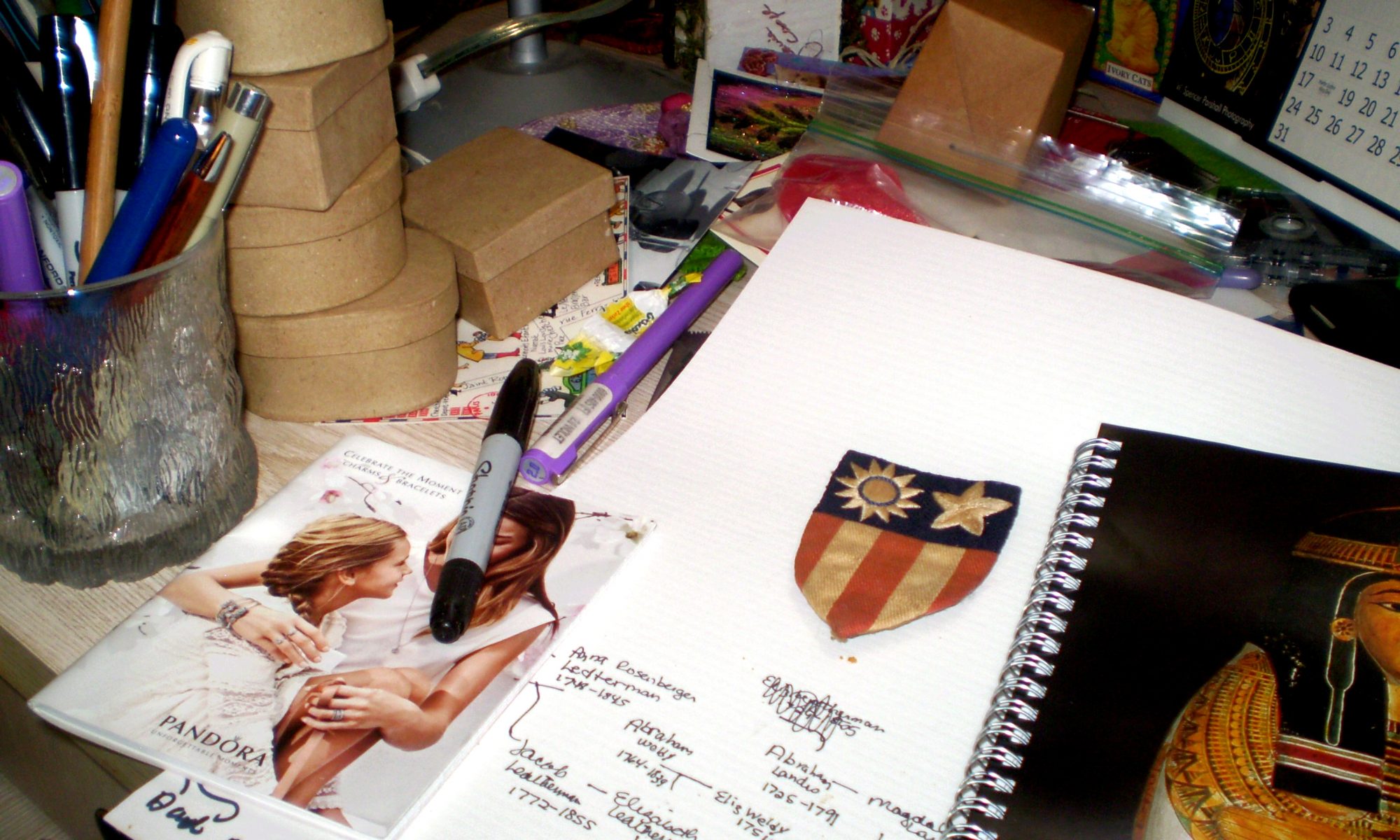
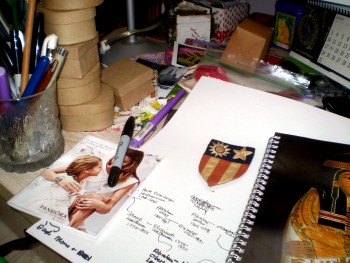
 After a long career in public broadcasting, Jeanie Croope is now doing all the things she loves — art, photography, writing, cooking, reading wonderful books and discovering a multitude of new creative passions. You can find her blogging about life and all the things she loves at
After a long career in public broadcasting, Jeanie Croope is now doing all the things she loves — art, photography, writing, cooking, reading wonderful books and discovering a multitude of new creative passions. You can find her blogging about life and all the things she loves at 

 Imelda Maguire has lived in all four provinces of Ireland, and now resides in Donegal, the far north-west of the country. Her poetry has been published widely in journals in Ireland, and she has read at many literary festivals and events throughout the country. A practicing counsellor, she facilitates creative and personal development activities with individuals and groups. Her first collection, Shout If You Want Me To Sing, was published in 2004 by Summer Palace Press. Her second, Serendipity, was published by Revival Press in 2015. They are both available by contacting her on
Imelda Maguire has lived in all four provinces of Ireland, and now resides in Donegal, the far north-west of the country. Her poetry has been published widely in journals in Ireland, and she has read at many literary festivals and events throughout the country. A practicing counsellor, she facilitates creative and personal development activities with individuals and groups. Her first collection, Shout If You Want Me To Sing, was published in 2004 by Summer Palace Press. Her second, Serendipity, was published by Revival Press in 2015. They are both available by contacting her on 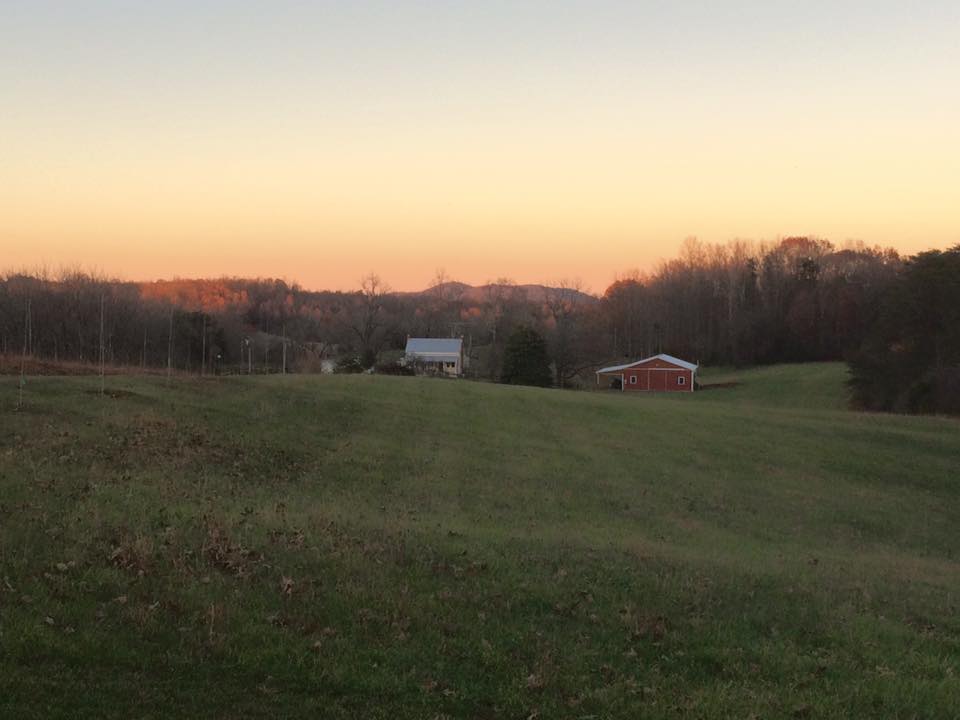

 late spring mornings. I’ve packed my husband’s lunch and washed the few eggs we gathered late last night.
late spring mornings. I’ve packed my husband’s lunch and washed the few eggs we gathered late last night.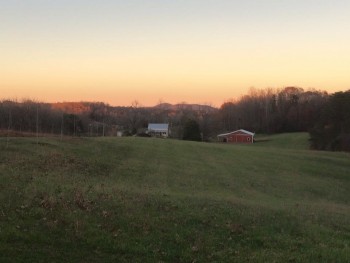 evenings I have to work, but I’m making that need more and more rare these days. Instead, I read or listen to podcasts if my energy is still high. As spring comes on, I’ll have garden chores to tend in these hours when the sunshine stretches himself.
evenings I have to work, but I’m making that need more and more rare these days. Instead, I read or listen to podcasts if my energy is still high. As spring comes on, I’ll have garden chores to tend in these hours when the sunshine stretches himself.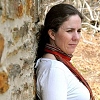 Andi Cumbo-Floyd is a writer, editor, and farmer, who lives on 15 blissful acres at the edge of the Blue Ridge Mountains with her husband, 6 goats, 4 dogs, 4 cats, and 22 chickens. Her books include Steele Secrets, The Slaves Have Names, and Writing Day In and Day Out. You can connect with Andi at
Andi Cumbo-Floyd is a writer, editor, and farmer, who lives on 15 blissful acres at the edge of the Blue Ridge Mountains with her husband, 6 goats, 4 dogs, 4 cats, and 22 chickens. Her books include Steele Secrets, The Slaves Have Names, and Writing Day In and Day Out. You can connect with Andi at 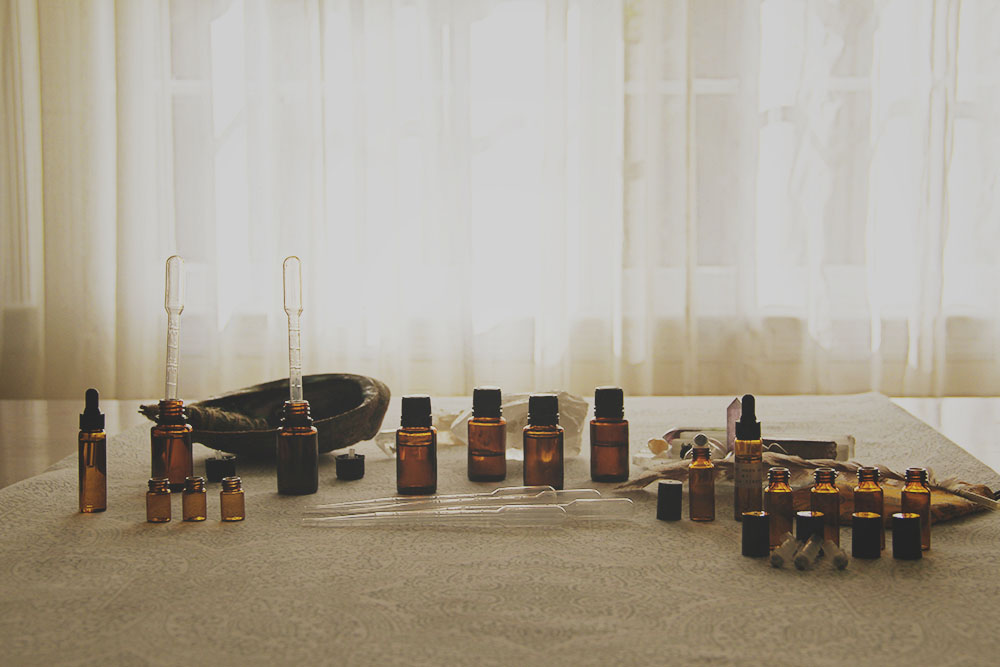

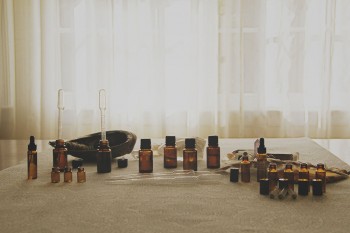 When this happens, I rely on my sacred essential oils to aide in lifting me out of one season and ushering me into the next. There are a couple of different ways I use the oils and I’d like to share them with you. But first, let me explain what essential oils are.
When this happens, I rely on my sacred essential oils to aide in lifting me out of one season and ushering me into the next. There are a couple of different ways I use the oils and I’d like to share them with you. But first, let me explain what essential oils are. because they remind me of summer and sunshine. Bergamot, lime, orange, and lemongrass have been my go to scents to diffuse at home and at work. It is said that citrus scents are energizing, uplifting, and they increase our mental awareness. Yes please! Because citrus fruit grows on trees, I feel like they pair well with a wood scent.
because they remind me of summer and sunshine. Bergamot, lime, orange, and lemongrass have been my go to scents to diffuse at home and at work. It is said that citrus scents are energizing, uplifting, and they increase our mental awareness. Yes please! Because citrus fruit grows on trees, I feel like they pair well with a wood scent. Bella Cirovic is a photographer and writer who lives with her husband and daughter in the suburbs outside of NYC. She writes on the subjects of self care, body love and nourishment, crystals, essential oils, and family life. Catch up with Bella at her blog:
Bella Cirovic is a photographer and writer who lives with her husband and daughter in the suburbs outside of NYC. She writes on the subjects of self care, body love and nourishment, crystals, essential oils, and family life. Catch up with Bella at her blog: 



 Melissa is a writer, voice actor, podcaster, itinerant musician, voracious reader, and collector of hats and rescue dogs. She is the author of
Melissa is a writer, voice actor, podcaster, itinerant musician, voracious reader, and collector of hats and rescue dogs. She is the author of 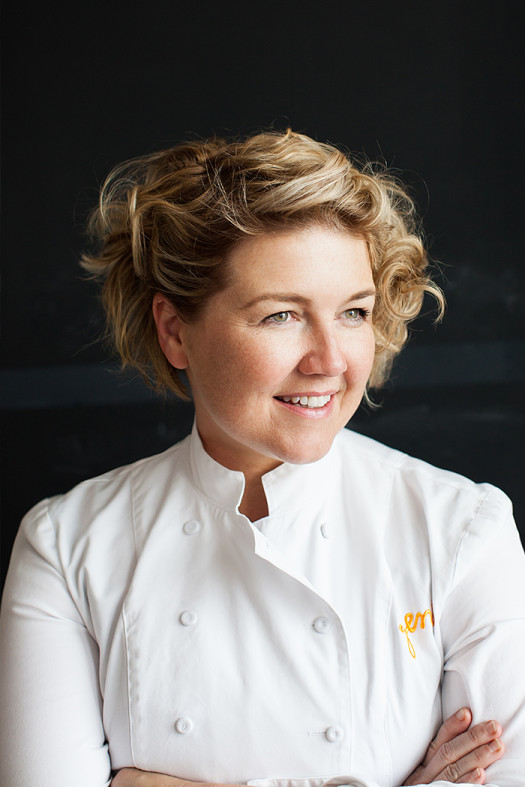


 life—school, other jobs—and started my first ice cream business within six months.
life—school, other jobs—and started my first ice cream business within six months. to a cookie, for instance, and then bake it, most of the vanilla will evaporate in the hot oven. In ice cream, you steep ingredients and fuze oil-soluble scents to the butterfat. It gets locked in when the mixture is frozen. The fat in cream is special because it melts perfectly at body temperature. Other fats don’t do this, so when you lick an ice cream the warmth of your tongue releases the scent from the fat in perfect timing. This is important because if it has to stay on your tongue too long to warm up, then you swallow it before you ever taste it. A good way to illustrate this is to freeze a high quality dark chocolate bar. You have to chew it and hold it on your tongue for a long while before you can taste it. It has to come to body temperature before it releases its scent. This is because cocoa butter melts at a higher temperature so it takes much longer to melt on your tongue.
to a cookie, for instance, and then bake it, most of the vanilla will evaporate in the hot oven. In ice cream, you steep ingredients and fuze oil-soluble scents to the butterfat. It gets locked in when the mixture is frozen. The fat in cream is special because it melts perfectly at body temperature. Other fats don’t do this, so when you lick an ice cream the warmth of your tongue releases the scent from the fat in perfect timing. This is important because if it has to stay on your tongue too long to warm up, then you swallow it before you ever taste it. A good way to illustrate this is to freeze a high quality dark chocolate bar. You have to chew it and hold it on your tongue for a long while before you can taste it. It has to come to body temperature before it releases its scent. This is because cocoa butter melts at a higher temperature so it takes much longer to melt on your tongue. There were hard times, too. And those made my sister and me fight even harder to get over the fence. To build security in our lives. To find safety. We both did. And I don’t wish anybody hardships, but you have to find a reason to become a fighter. You’ve got to own it. And to learn to hustle. I mean work every single resource you have to move forward, even when it seems like you have nothing.
There were hard times, too. And those made my sister and me fight even harder to get over the fence. To build security in our lives. To find safety. We both did. And I don’t wish anybody hardships, but you have to find a reason to become a fighter. You’ve got to own it. And to learn to hustle. I mean work every single resource you have to move forward, even when it seems like you have nothing. local and regional sources, but without question, the most important thing we can do is to eat more fresh vegetables—wherever they come from, local or not.
local and regional sources, but without question, the most important thing we can do is to eat more fresh vegetables—wherever they come from, local or not. about passion (which I also get accused of). Sure, things like fun and passion are a part of it, but you have to work really hard to get there. You have fun when you build a team that is challenged, secure and excited about the future.
about passion (which I also get accused of). Sure, things like fun and passion are a part of it, but you have to work really hard to get there. You have fun when you build a team that is challenged, secure and excited about the future.
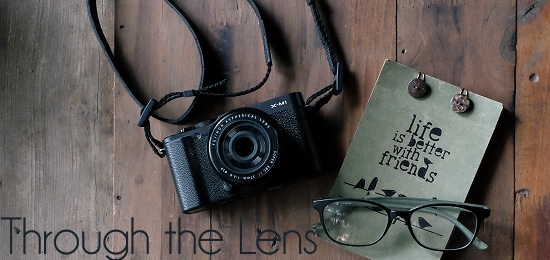

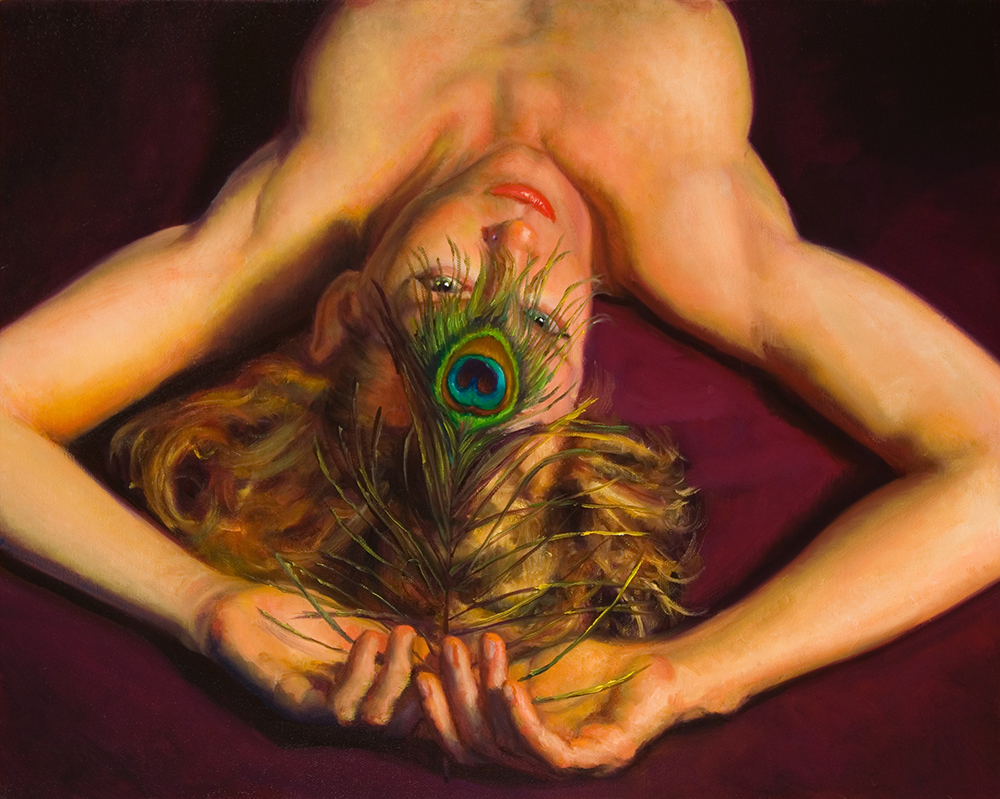


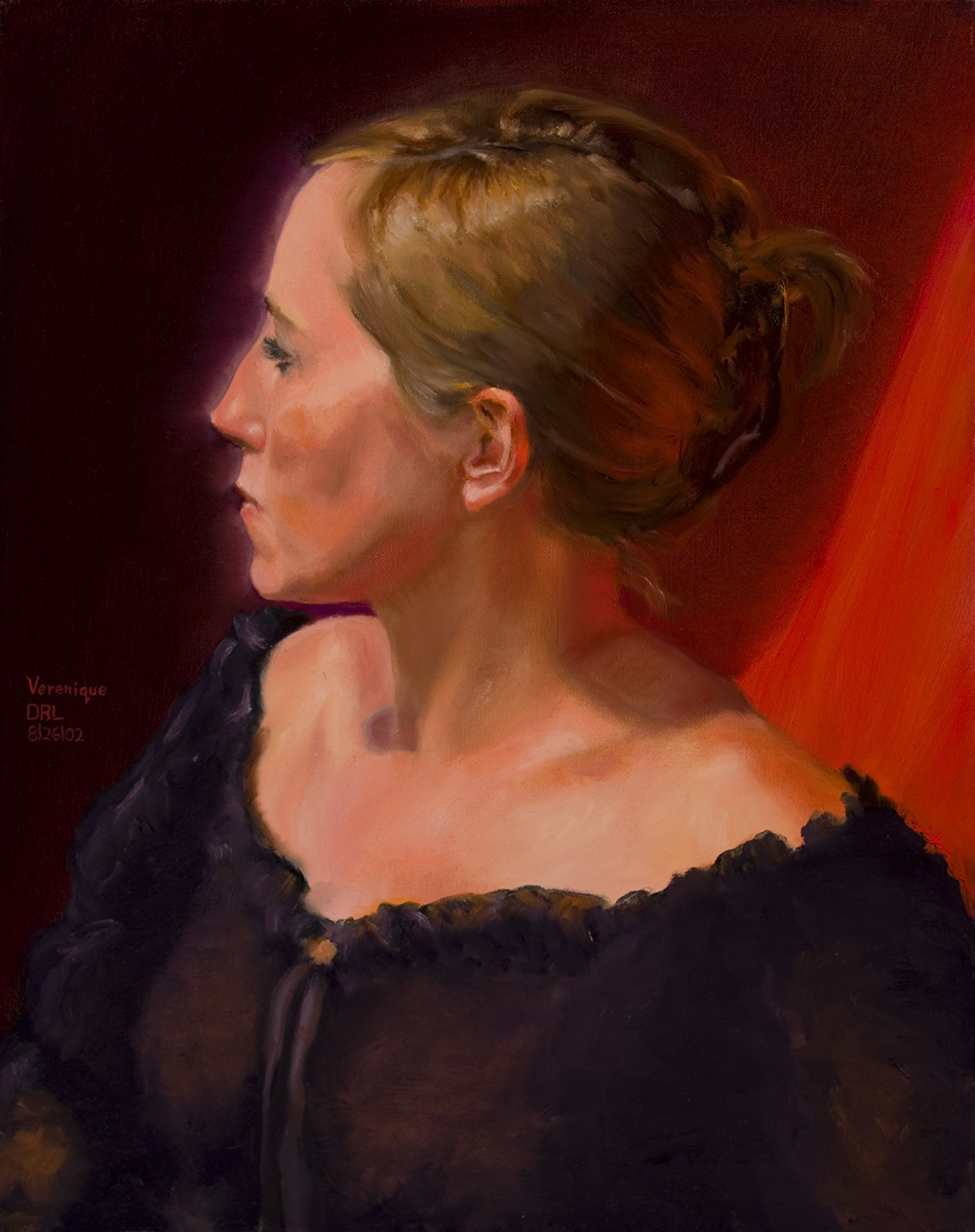

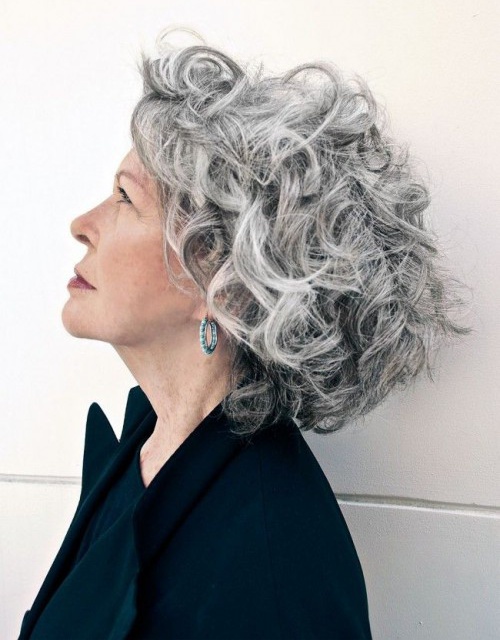
 She wandered past the perimeter
She wandered past the perimeter Patricia Wellingham-Jones is a widely published former psychology researcher and writer/editor. She has a special interest in healing writing, with poems recently in The Widow’s Handbook (Kent State University Press). Chapbooks include Don’t Turn Away: poems about breast cancer, End-Cycle: poems about caregiving, Apple Blossoms at Eye Level, Voices on the Land and Hormone Stew.
Patricia Wellingham-Jones is a widely published former psychology researcher and writer/editor. She has a special interest in healing writing, with poems recently in The Widow’s Handbook (Kent State University Press). Chapbooks include Don’t Turn Away: poems about breast cancer, End-Cycle: poems about caregiving, Apple Blossoms at Eye Level, Voices on the Land and Hormone Stew.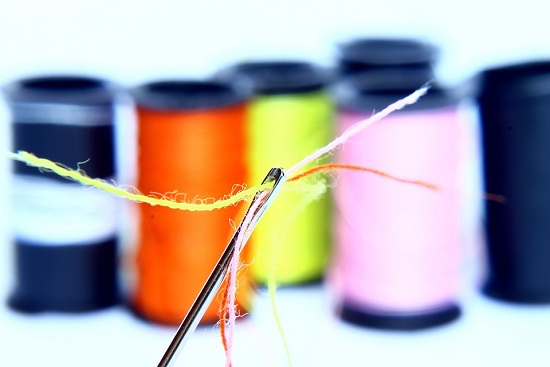
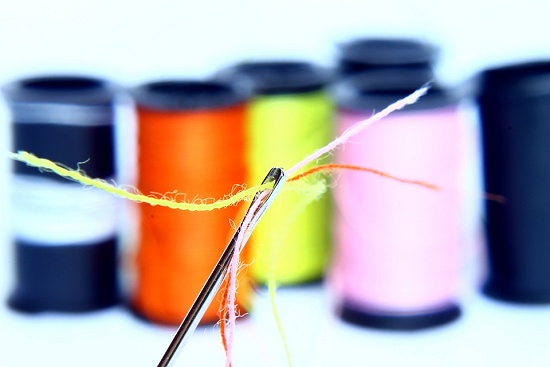 lush velvets all put possibilities in my head. Even the neat little packages of zippers, thread, bias tape, and buttons—arranged rainbow-like—delight me. I want to buy them all, but time and money won’t let me. So I work one project at a time.
lush velvets all put possibilities in my head. Even the neat little packages of zippers, thread, bias tape, and buttons—arranged rainbow-like—delight me. I want to buy them all, but time and money won’t let me. So I work one project at a time. I live in Raleigh, NC where I write, read, and watch birds. My stories have appeared in several magazines, most recently Every Writer’s Resource, Still Crazy and the Raleigh News and Observer. I am a Writer in Residence at the Weymouth Center. Get to know me better
I live in Raleigh, NC where I write, read, and watch birds. My stories have appeared in several magazines, most recently Every Writer’s Resource, Still Crazy and the Raleigh News and Observer. I am a Writer in Residence at the Weymouth Center. Get to know me better